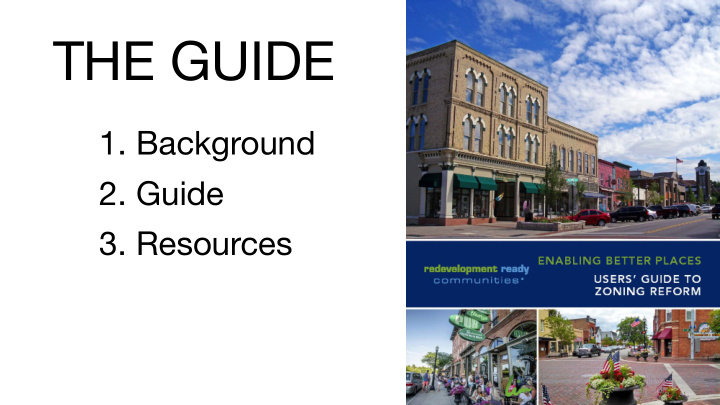



THE GUIDE 1. Background 2. Guide 3. Resources
PLACE TYPES Main Streets Downtowns Adjacent Neighborhoods intensity, range of uses, and infrastructure
“If you do nothing else, do this…”
AREAS OF REFORM
Focus on vibrancy and pedestrian activity
Frontages Set a MAXIMUM front setback • Require useable entries face the street • Require minimum transparency •
Streetscape • Establish or protect on-street parking
Use • Permit mixed-use • Simplify uses
Parking • Require parking lots to be located behind buildings
MODEL DISTRICTS
Getting Started
DETERMINE YOUR PLACE TYPE: Main Streets Downtowns Adjacent Neighborhoods intensity, range of uses, and infrastructure
DETERMINE YOUR PLACE TYPE: Who and where are you and what do you aspire to be?
Determine scope & select district[s] [M] [D] [A]
Determine scope & select district[s] [M] How much change? Preserve? Enhance? Transform? Enable * Prohibit * Require
Map the district[s] Where should the standards apply?
Where should the standards apply? • Pedestrian sheds • Primary retail corridors • “Park Once” environments
Where should the standards apply? Know your market
Where should the standards apply? Mixed-use by proximity
“If you do nothing else, do this…” • Set a MAXIMUM front setback, or build-to line • Require parking lots to be located behind buildings • Permit compatible uses in most districts
Recommend
More recommend